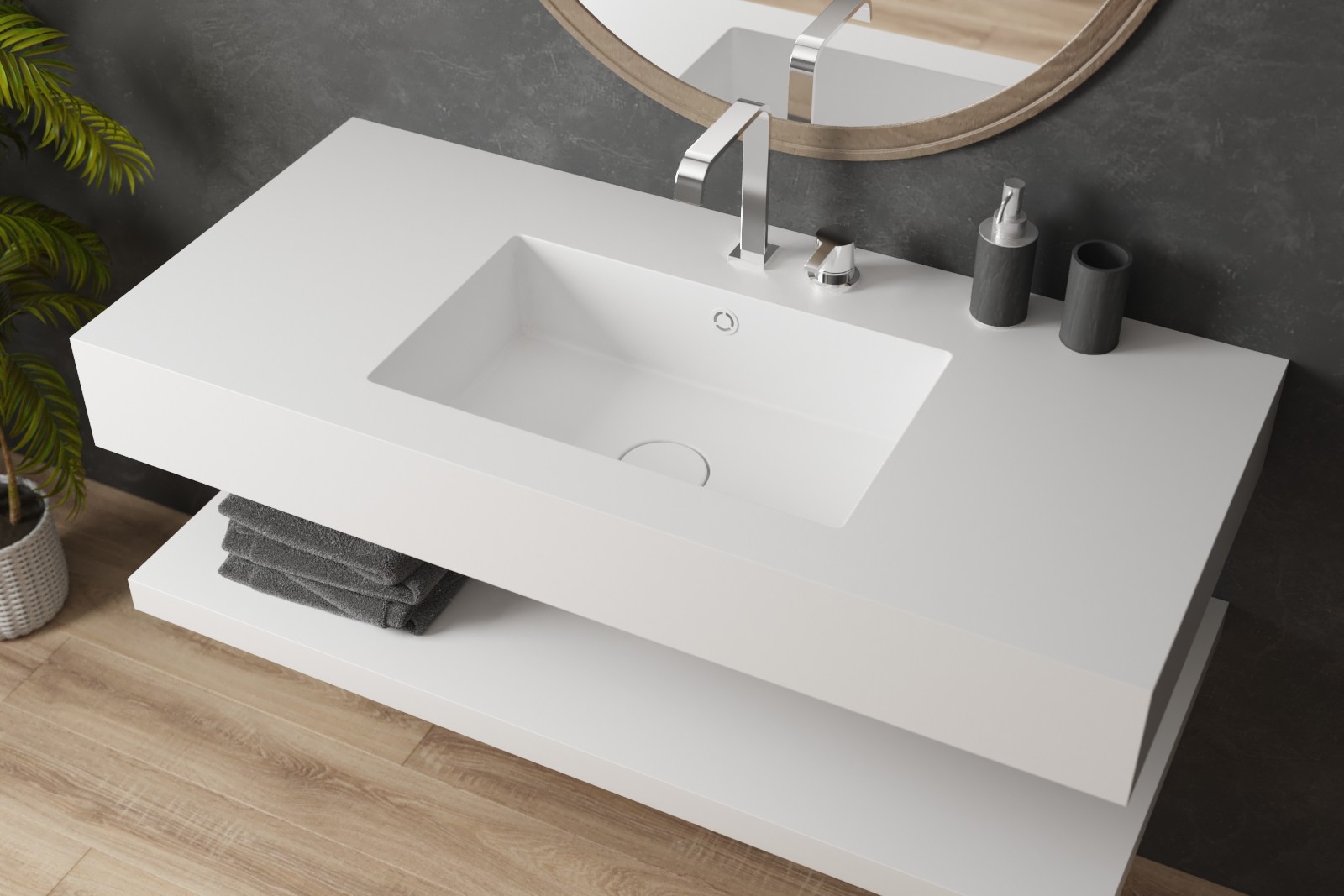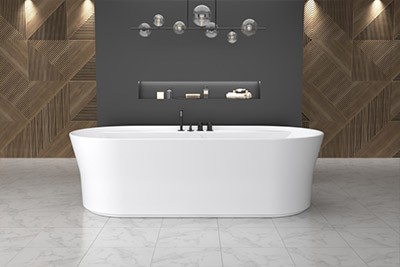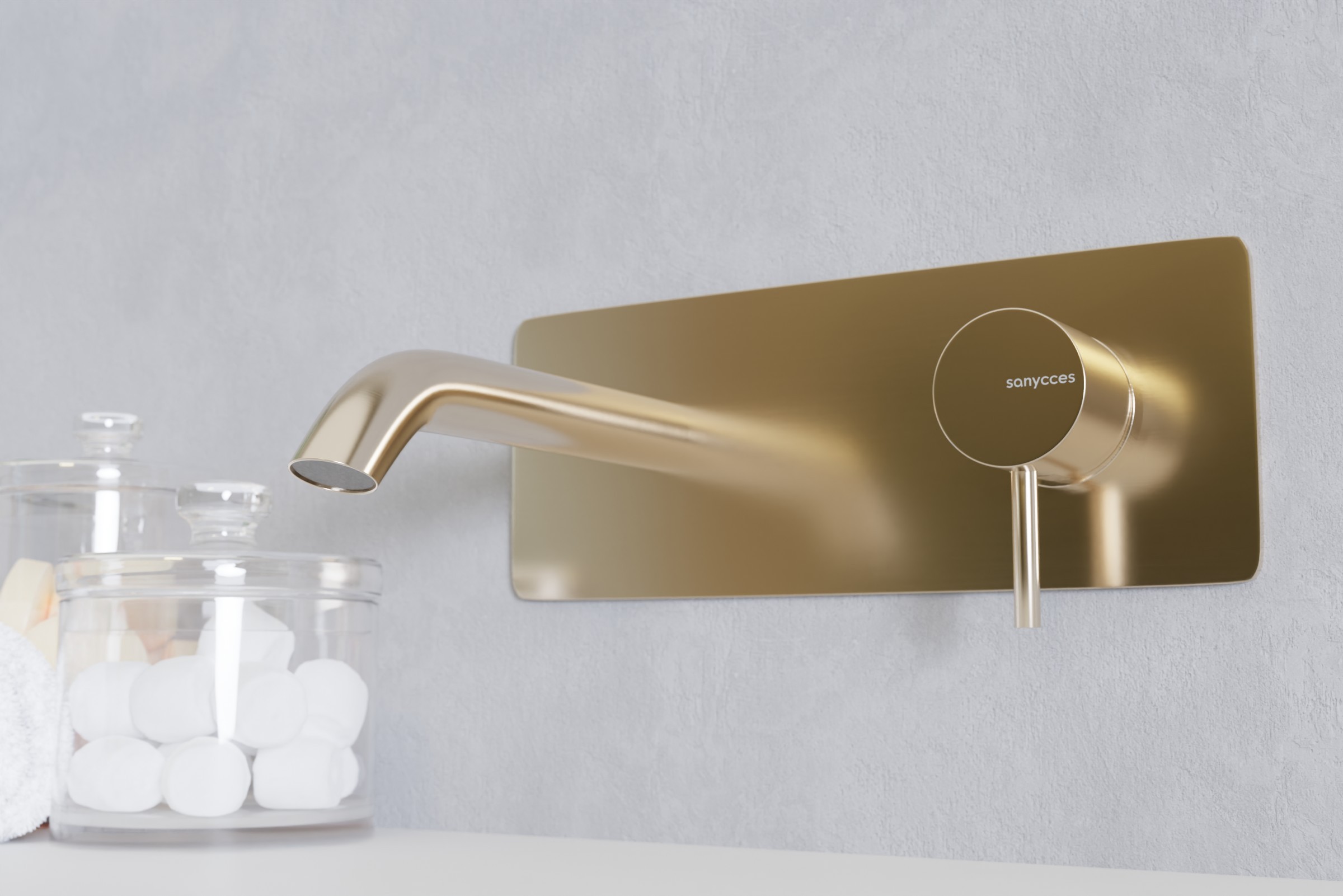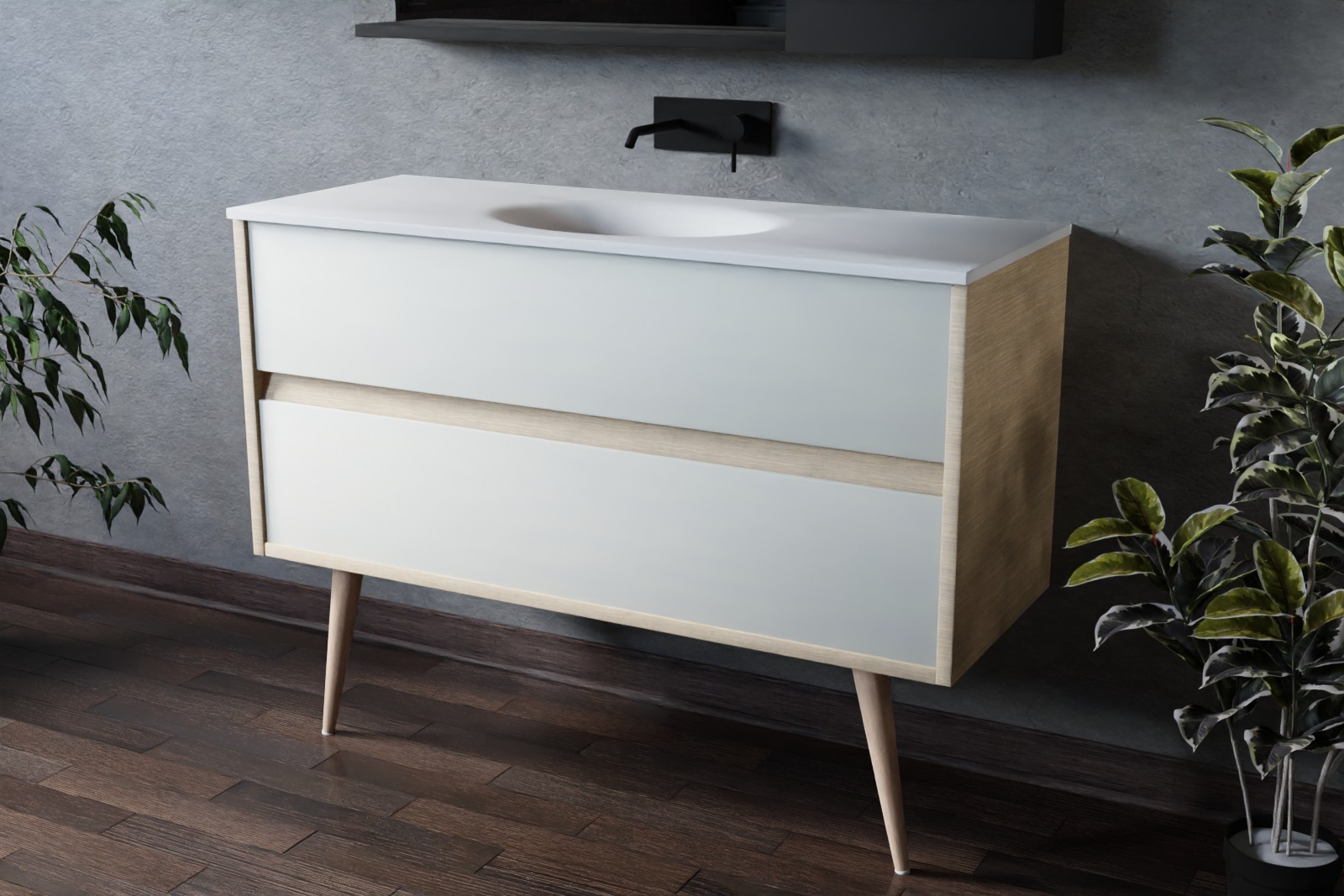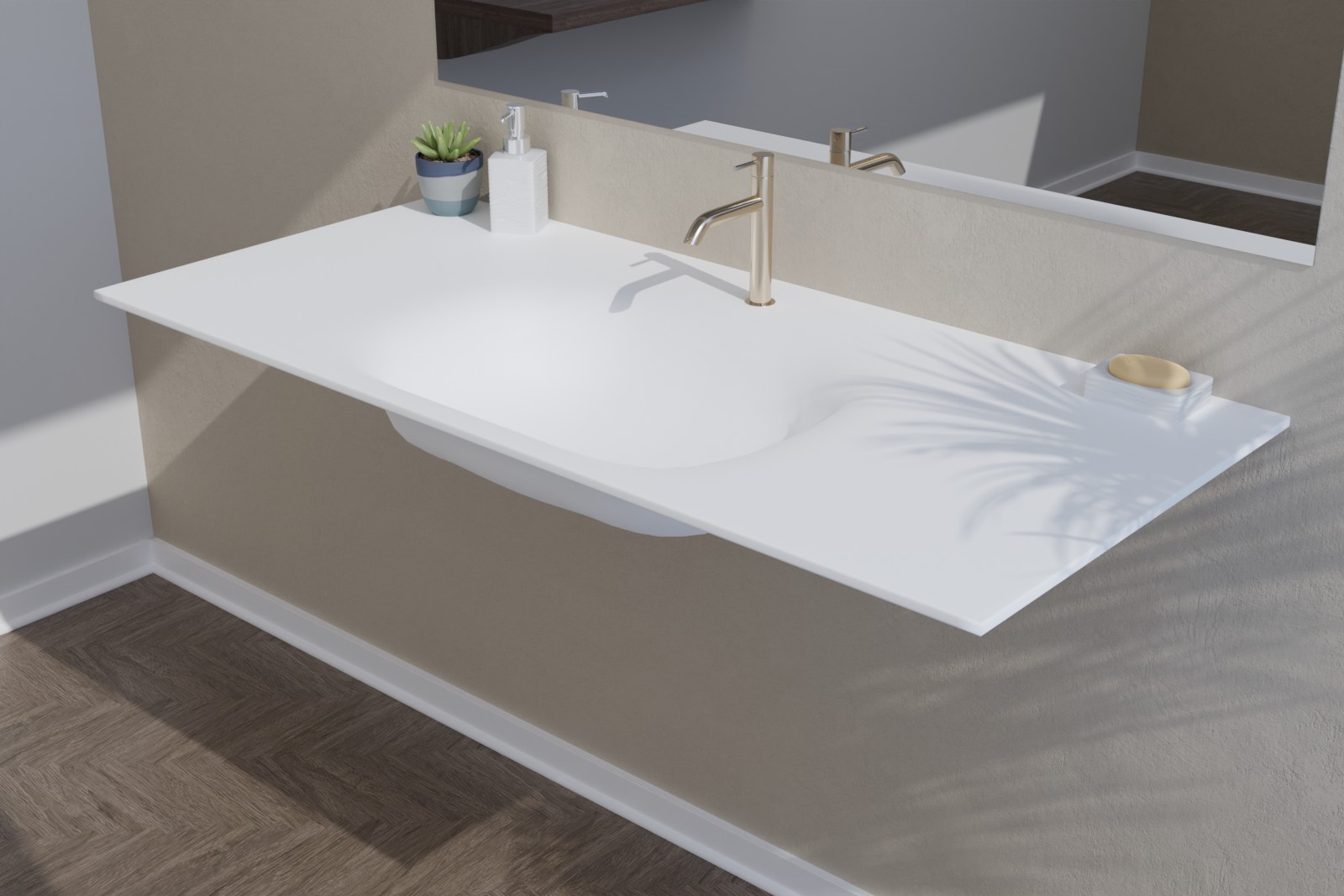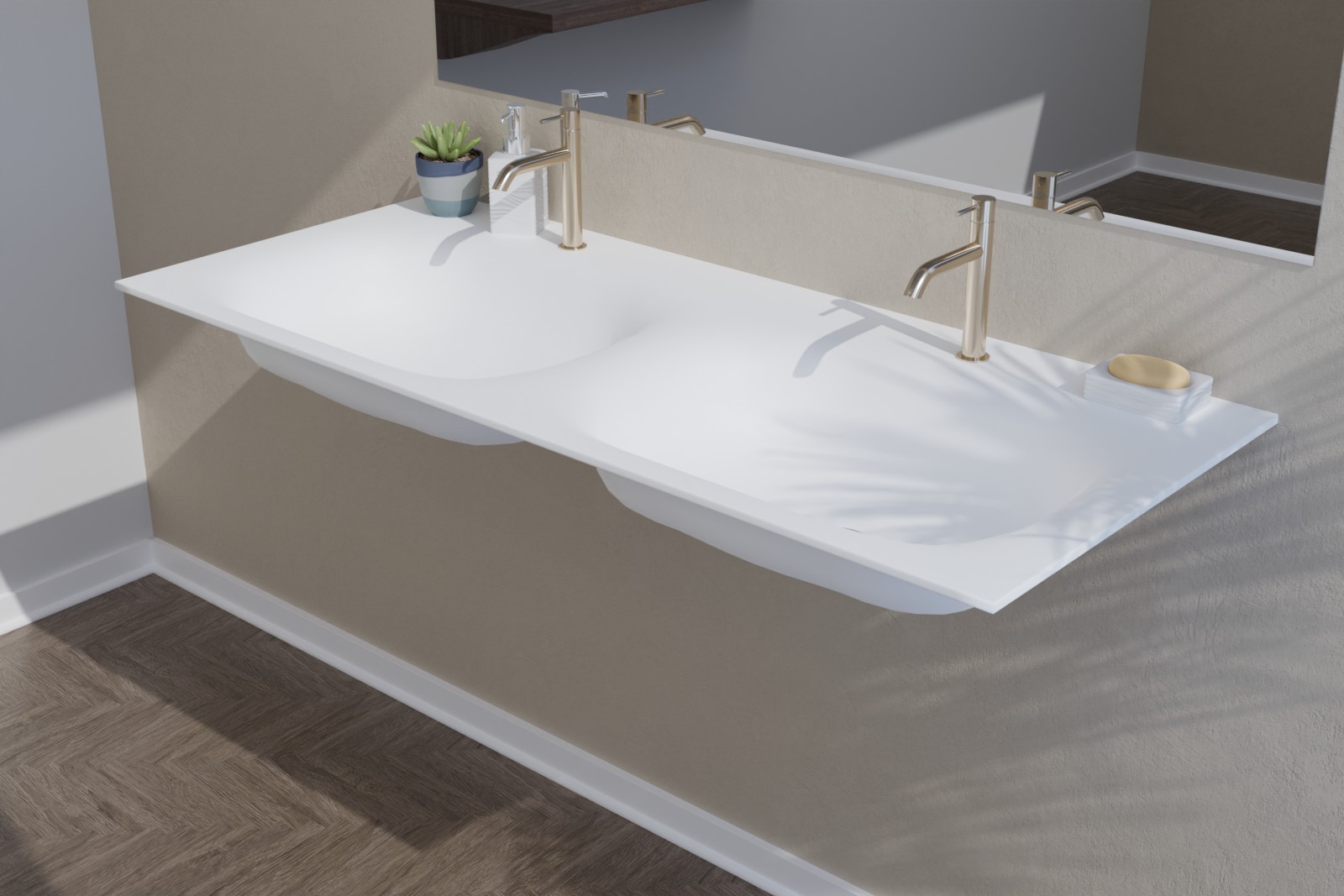Choosing a bathroom basin can be a complicated choice, especially when you consider the many models on the market today.
.jpg)
The different models :
There are different models of basins, but the most common are the built-in basins. This is one of the most popular models as it is generally more convenient to purchase as it is a single unit and is usually sold directly with the appropriate vanity unit. Built-in basins are also space saving due to their flat surface, allowing full use of the storage space. However, this model can be difficult to install as it requires suitable plumbing for the water flow. It is also important to have the right depth of furniture to fit the basin to the right size. There are cabinets with and without pre-cut outs for this purpose, to facilitate the installation of the basin. The final advantage of built-in basins is that they are easier to maintain and reduce the risk of splashes.
The second choice is the free-standing basin, a model that is very popular for its aesthetic and design aspects. It is available in a variety of shapes and models, so you can find an original model to enhance your bathroom. Its installation is easier and does not require any special skills, only the installation of a suitable drain.
The freestanding washbasin offers several advantages over other types of washbasins. First of all, it offers a great deal of design freedom by allowing you to choose different shapes and materials for the top and the basin. In addition, being freestanding, it does not require any underlying furniture, which makes installation quicker and easier. In addition, the freestanding basin top allows for better accessibility for maintenance and cleaning, as there are no obstacles underneath or on the sides. Finally, it can be an ideal solution for small bathrooms or tight spaces, as it does not take up as much space as a traditional vanity unit.
The last possible model is the pedestal washbasin, also known as the totem washbasin or pedestal washbasin. This type of basin has an original design that will give your bathroom a unique and designer look. This model is perfect if you want to make a statement with an unusual bathroom. It is particularly suitable for small bathrooms, as its high design maximises storage space. Installation of this type of basin is relatively simple, as it is usually a one-piece piece. All you need to do is choose a wall-mounted basin, a simple mixer tap or a floor or wall drain, depending on your preference.
.jpg)
The material
There are various materials for basins, and the most commonly used material is ceramic. It is inexpensive and quite durable over the long term. However, it can be slippery and sensitive to impact, and its surface can be cold to the touch. In addition, it is difficult to find ceramic basins in different colours, as ceramic is difficult to dye. As for shapes, they are usually square or rectangular, and original designs are rather rare.
Solid surface is an ideal material for making basins because of its many advantages, such as its resistance to stains, its ease of maintenance and its antibacterial properties. It can be processed using a variety of techniques, allowing for a variety of shapes and designs. Synthetic resin is also pleasant to use because it adapts to the ambient temperature. In addition, solid surface is an innovative material that can mimic many other materials by changing its texture or appearance while retaining its advantages. This means that you can completely customise the colour of your basin by choosing from the many options offered by brands such as CORIAN® or KRION®. The only drawback is that solid surface basins are relatively expensive because they are handmade to order.
Stone or marble basins are also available and are popular for their design and aesthetics, which add a touch of luxury to a bathroom. However, their installation can be complex as they are usually very heavy and require appropriate furniture. In addition, they are fragile and require regular and proper maintenance. Although they are expensive due to the quality of the materials used, they add significant aesthetic value to any bathroom.
.jpg)
The choice of form
There are many different shapes and designs for basins.
Rectangular or square basins are the most commonly used models. Their shape facilitates installation and allows them to be easily integrated into a corner to optimise space. They are available in different sizes, making them compatible with various types of furniture. Rectangular or square basins can be made to measure, which means they can be miniature or XXL in size. These basins offer a greater volume of water than oval or round basins, and their shape also reduces the risk of splashing.
Round and oval basins have become very popular in recent years. Their shape is both aesthetically pleasing and practical and is easy to clean as there are no corners where dirt can collect. However, they require more space to install than rectangular or square basins as they cannot be installed at an angle. Therefore, if you have a small bathroom, these basins are not the most suitable models
Atypically shaped basins are ideal if you want a unique bathroom that stands out from conventional designs. The solid surface allows you to create original and customised shapes. Atypical basins allow you to personalise your space and give it a contemporary, designer look. However, it is important to ensure that your basin, despite its extravagant design, remains easy to use and maintain.


